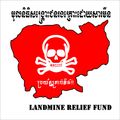(CNN) — Heatstroke deaths often surge in summer months as temperatures rise.
Your normal body temperature is around 98.6 degrees Fahrenheit; with heatstroke the body can warm up to 106 degrees F or higher in 10 to 15 minutes.
Unlike heat exhaustion, a milder form of heat-related illness,heatstroke causes the skin to become red or hot; your pulse quickens and becomes stronger. If not treated immediately, heatstroke can lead to death or permanent disability.
Heatstroke symptoms
Heatstroke symptoms include an elevation of body temperature, lack of sweating, headaches, nausea and vomiting. Neurological symptoms, such as confusion and unconsciousness, can also result from extreme exposure to heat, according to the Mayo Clinic.
Elderly people and young children, as well as people with chronic severe illnesses, have the highest risk of developing the condition. People with kidney, liver and heart problems in particular should be extra aware of the heat, experts say, and should talk with their doctors about heat exposure.
 How hot cars can kill kids
How hot cars can kill kids
Heatstroke treatment
If you believe someone is having a heatstroke, the CDCrecommends moving him or her to a cooler location, calling 911 and using damp cloths or a cool bath to help lower his or her body temperature. Do not give the victim any fluids.
In severe cases, patients must be admitted to the intensive care unit, where medical staff watch body temperature carefully.
“If you can get them to treatment fairly quickly, they’ll survive it,” said Dr. Janyce Sanford, chair of emergency medicine at the University of Alabama, Birmingham.
Treatment focuses on cooling the patient down to a normal body temperature. If the patient has a clear airway, breathes normally and has normal circulation, Sanford said medical staff will remove his or her clothes and spray cool water while a fan is blowing. Cool intravenous fluids can also help bring body temperature down.
Heatstroke prevention
To protect yourself, try to avoid strenuous physical activity outside during the hottest time of the day — between 10 a.m. and 6 p.m.
People who must work outside should make sure to drink plenty of water every half-hour or so and take breaks in a cool environment if possible, Sanford said. Wearing lightweight, light-colored clothing and a wide-brimmed hat can also help, according to the Mayo Clinic.
The CDC also stresses that no one should be left in a closed, parked vehicle. In 2013, the number of confirmed heatstroke deaths of children left in cars was 39, reports Jan Null, a certified consulting meteorologist with San Francisco State University.
You can tell if you’re dehydrated by looking at your urine. If you’ve had adequate amounts of water, your urine will be light in color; a darker yellow or orange means you need to drink more.
And make sure you check on the elderly, especially if they don’t have air conditioning. They should spend time in cool places such as a library or a mall to get a break from the heat, Sanford said.
5 tips for surviving extreme heat
CNN’s Elizabeth Landau and Sara Cheshire contributed to this report.

Very good website you have here but I was curious about if you knew of any user
discussion forums that cover the same topics talked about here?
I’d really love to be a part of online community where I can get opinions
from other knowledgeable individuals that share the same interest.
If you have any suggestions, please let me know. Thanks a lot!